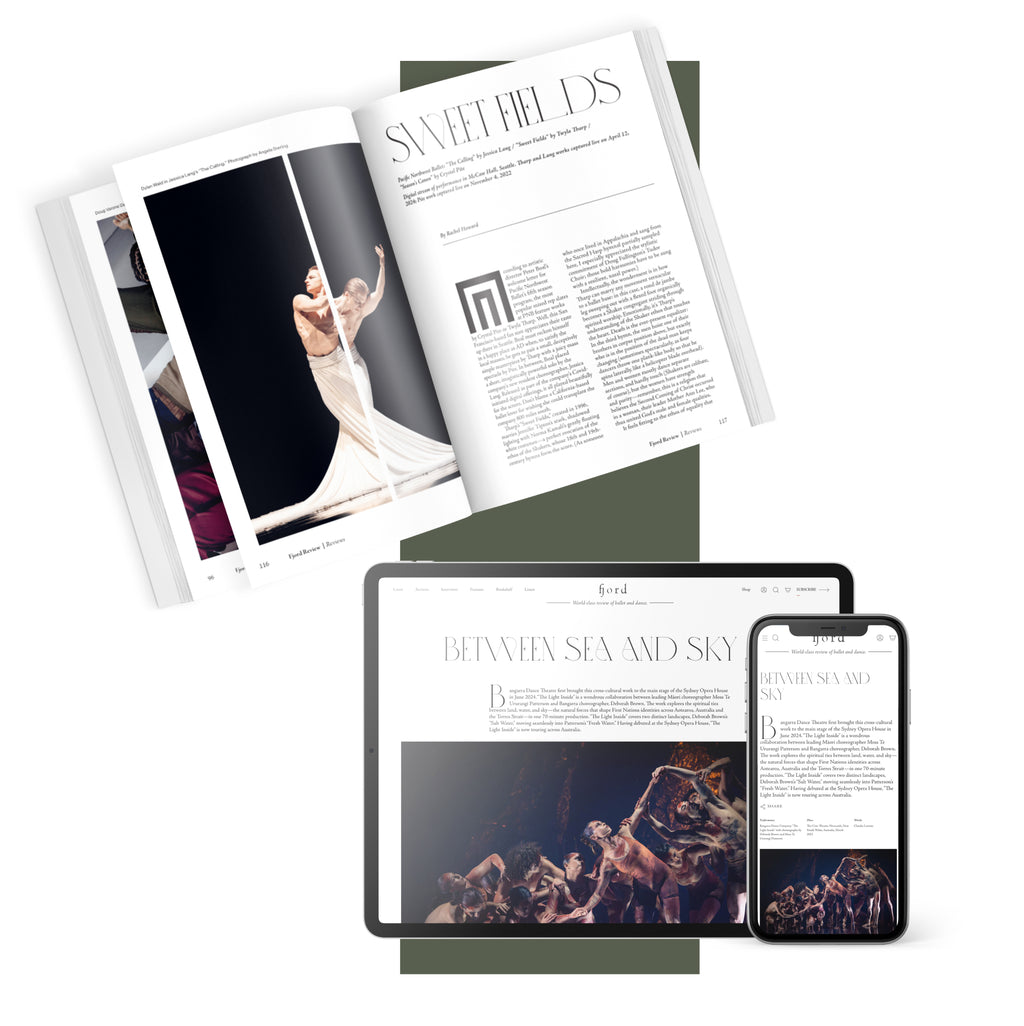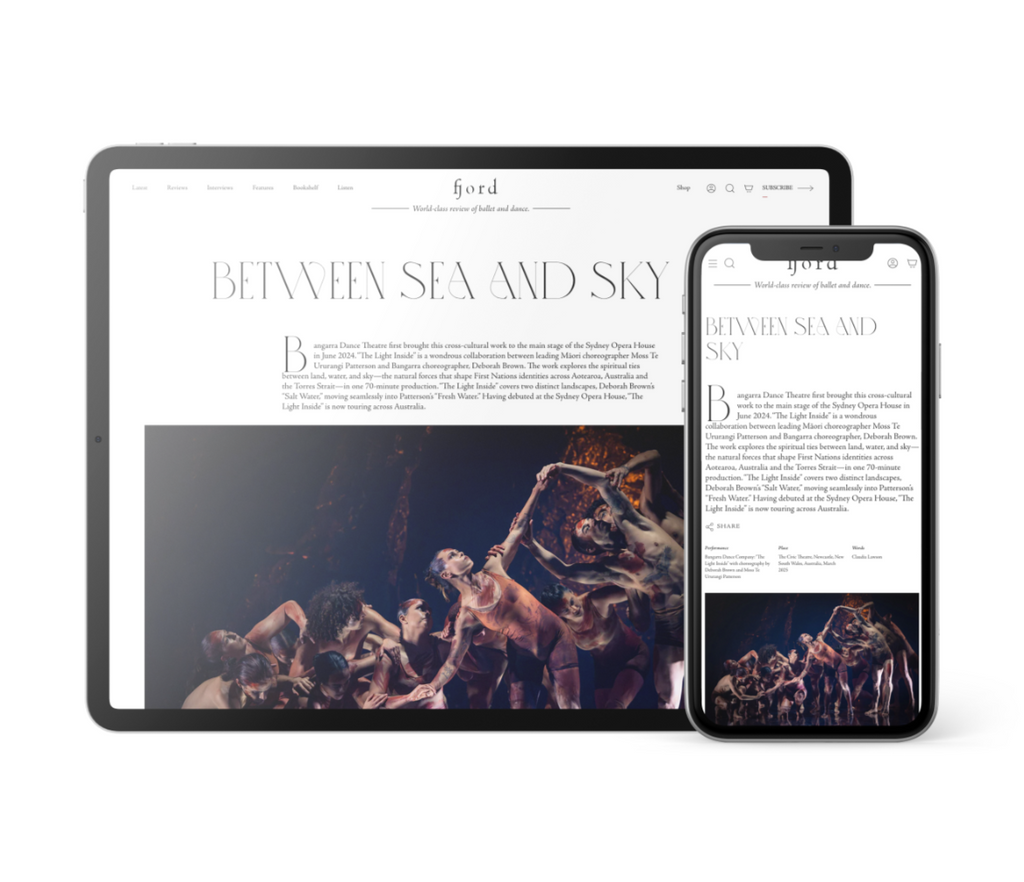The first composer on the program is, in fact, the ballerina’s mother—an accomplished pianist in her own right who Brandt credits with her extensive knowledge of and love for music. It is to her composition, No. 1, which she wrote at 16 years of age, that Brandt has developed her choreographic debut. It is titled, tenderly, “For Mom.”
The piece begins with Brandt, dressed in a girlish white dress, ankle socks, and ballet slippers, sitting cross-legged near the end of the glossy black Steinway that centers the stage. The melody that Rumyantsev begins to play is mellifluous, and Brandt rises into an airy petit allegro. Sequences of sissons are delicate yet grounded, especially when finished in an expansive sisson ouverte, Brandt breathing through a luxurious allongé. Her long hair, worn down, adds to her lighthearted and lissome effect. She is not a sylph or any kind of balletic spectre, but rather, a young woman revealing in her own language, the contents of her heart.
“For Mom” is a choreographed reverie—one that, like any daydream—has its moments of lingering reflection. Several times in the piece, Brandt rests her cheek on both hands, laid flat together, her eyes closed in apparent bliss. It is a moment almost too lovely, her expression seems to convey, as the music channels through her body, from her core and outward through her controlled port de bras.
At other moments, she takes a pause, lingering at the piano—Lucy and Schroeder-style—to watch Rumyantsev play before she is set compulsively back into motion. It is a piece with moments of ecstasy, as in Brandt’s animated jumps, and contemplation, as the dancer surrenders more calculated movements to instances of pause and listening. It ends in a simple moment of connection: Brandt joins Rumyantsev on his piano bench, where she leans her head against his shoulder. Once he’s hit the final chord, he turns to match her adoring gaze.











comments